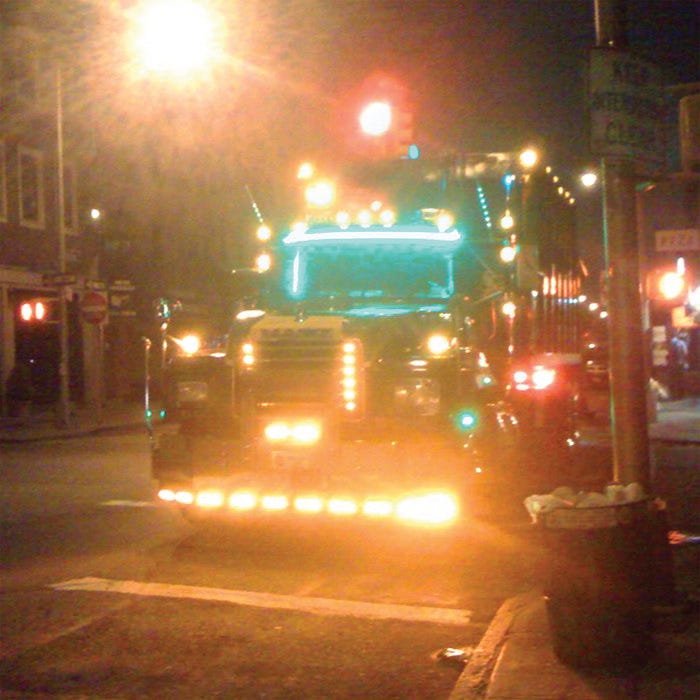Deerhoof: There's Nothing More Punk than Doing It Yourself
The punk rockness of the cover of the band's 2012 album Breakup Song
When things get so big, I don't trust them at all You want some control — you've got to keep it small — Peter Gabriel, "DIY" (1978)
One sultry summer night on her street in Greenpoint, Brooklyn, Deerhoof’s singer-bassist Satomi Matsuzaki took out her cellphone and took a photo of a truck that had a lot of lights on it. The photo became the cover of Deerhoof's excellent 2012 album Breakup Song. Not a big deal on the face of it, but that simple, seemingly unremarkable gesture was a definitive expression of DIY, the timeless sensibility that enabled punk rock. The whole idea of punk rock wasn't necessarily to make music that was loud and fast. It was to be able to sustainably make music that the mainstream media would never allow. And to do that, there had to be a lot of infrastructure. People had to build an entire parallel music industry: record labels, radio, retail, distribution, recording studios, venues, and press. Punk was about seizing the means of production. Kind of like using your cell phone to create the cover of your band's album. Sometimes, even the squarest people exclaim, "That is so punk rock!" Now, it would be tempting to say that these folks wouldn't know punk rock if it ran up and gobbed in their face but, in fact, they have an excellent grasp of the term. By punk rock, they don't mean sporting a black leather jacket and a mohawk, they mean that someone has taken matters into their own hands and made a nervy and resourceful end-run around the status quo. The beautiful thing is, anyone can do that, and in just about any field of endeavor: for instance, one can be a punk rock chef or a punk rock architect or a punk rock lawyer. In the early days of indie rock, advances in consumer technology enabled just such defiant ingenuity: the photocopier became accessible to just about anyone, which wrought an explosion of fanzines. The fax machine made it much easier to run a record label. The advent of four-track cassette recorders allowed anyone to easily make multi-track recordings, ushering in the quintessentially DIY lo-fi movement: now, people could record soul-changing music even if they didn't have the studio budget of Fleetwood Mac. Today, digital technology has advanced DIY exponentially further, giving anyone with an internet connection a virtually global reach and a virtually unlimited scale. Then there's Pro Tools and other music-recording and music-making software, file-sharing, social media, podcasting, Bandcamp, etc. Now, the music underground is empowered beyond even the wildest dreams of the '80s indie community. Now, musicians can be more truly independent than ever. Now, an inspired musician can use her cellphone to take the lo-fi but strikingly artful photograph for her band's album cover. Now, the future is here.


